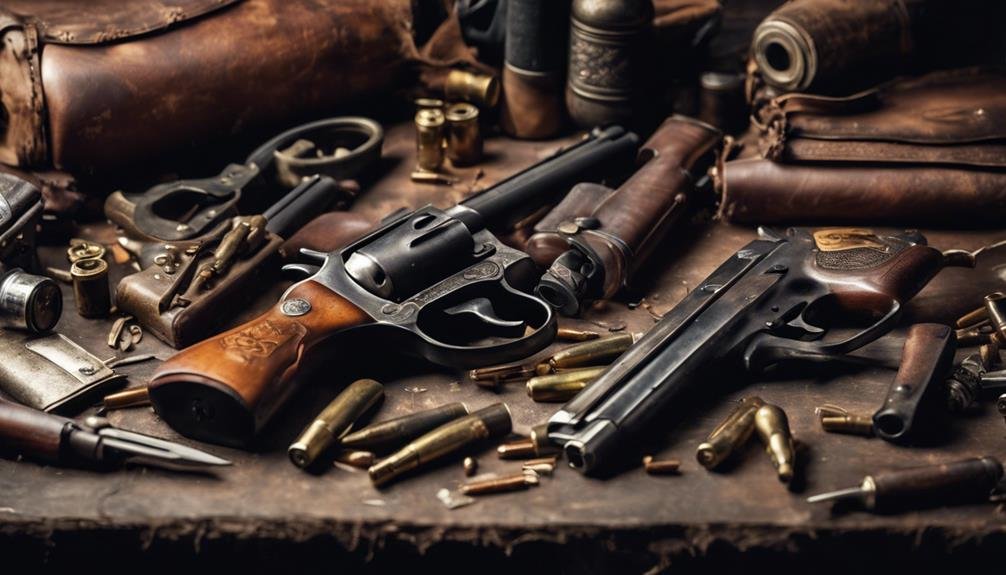Fly tying hooks are a critical component of successful fly fishing, with various types, shapes, sizes, and materials available to suit specific fishing conditions, target species, and fishing techniques. From barbless hooks for responsible angling to dry fly hooks for delicate presentations, streamer hooks for robust constructions, and specialized hooks for saltwater and nymph fishing, each type is designed to cater to specific fishing scenarios. By understanding the nuances of each hook type, anglers can refine their fly tying skills and ultimately, their catch rate. As you explore the world of fly tying, you'll discover the significance of hook selection in elevating your fishing experience.
Key Takeaways
- Fly tying hooks come in various shapes, sizes, and materials, each designed for a specific purpose and fishing scenario.
- Barbless hooks are essential for responsible angling, minimizing injury to fish and promoting sustainable fishing practices.
- Dry fly hooks have a lightweight wire construction and shorter shank, allowing for a natural fly presentation on the water's surface.
- Streamer hooks are designed for fishing in deeper waters, with a more robust construction and longer shank to accommodate bulky streamer patterns.
- Specialized hooks, such as saltwater and nymph hooks, cater to specific fishing conditions and target species, requiring innovative designs and materials.
Types of Fly Fishing Hooks
Fly tying hooks, a fundamental component of fly fishing, come in various shapes, sizes, and materials, each designed to serve a specific purpose in creating an effective fly. When selecting hooks for fly tying, think carefully about the type of fishing, water conditions, and target species. Hooks can be made from materials like stainless steel or nickel, and their shapes can vary from long and curved to short and straight. Beginners can start with fly tying kits, which usually include a selection of hooks, and later move to buying individual hooks as their skills improve. Understanding the different types of hooks and their applications is key for successful fly tying and ultimately, a productive fishing experience.
Barbless Fly Hooks
When it comes to catch-and-release fishing, barbless hooks are an essential component of a responsible angler's arsenal, allowing for a safer and more humane way to handle and release fish. These hooks are designed for fish conservation and responsible angling practices. By using barbless hooks, anglers can minimize the risk of injury to the fish, making it easier to release them back into the water unharmed. This is particularly important in catch-and-release fishing, where the goal is to conserve fish populations and promote sustainable fishing practices. Barbless hooks are a simple yet effective way to prioritize fish conservation and promote responsible angling. By choosing barbless hooks, anglers can do their part in protecting fish populations and preserving the environment.
Dry Fly Hooks
With their lightweight wire construction and shorter shank, dry fly hooks are specifically designed for presenting delicate, lifelike imitations on the water's surface. This design enables anglers to achieve a natural fly presentation, which is vital for catching trout and other selective fish. When selecting a dry fly hook, think carefully about the type of fly being tied and the fishing conditions. A well-chosen hook can make all the difference in the effectiveness of the fly presentation. For instance, a hook with a turned-down eye allows for a more natural presentation, while a lightweight wire construction guarantees the fly lands softly on the water. By choosing the right dry fly hook, anglers can boost their chances of success on the water.
Streamer Hooks
In contrast to dry fly hooks, streamer hooks are designed for fishing in deeper waters and for targeting larger fish, requiring a more robust construction and a longer shank to accommodate the often-bulky profiles of streamer patterns. Streamer techniques often involve using heavy lines, strong leaders, and weighted flies, making a sturdy hook essential. When selecting a streamer hook, consider the type of streamer pattern you're tying, as well as the target species. For example, articulated streamer patterns require a hook with a long shank, while wide gap streamer hooks are ideal for tying flies with bulky heads. By choosing the right streamer hook, you can guarantee that your fly selection is well-matched to the fishing conditions and target species, increasing your chances of landing that trophy catch.
Specialized Fly Hooks
Saltwater fly tying hooks, designed for the harsh marine environment, are typically larger and thicker than their freshwater counterparts, requiring corrosion-resistant or treated metal constructions to withstand the abrasive properties of seawater. These specialized hooks enable fly fishermen to target species in coastal waters while ensuring durability and longevity. In addition to saltwater hooks, nymph fly hooks are another type of specialized hook, designed for fishing in different water types and for specific fish species. Hook technology has played a pivotal role in the development of these specialized hooks, allowing for innovative designs and materials that cater to specific fishing conditions. By utilizing these specialized hooks, fly fishermen can contribute to fly conservation efforts while enjoying their sport.
Saltwater Fly Tying Hooks
Targeting species in coastal waters requires fly tying hooks that can withstand the corrosive properties of seawater, making saltwater fly tying hooks a crucial component of a successful saltwater fishing trip. Saltwater hooks are designed with corrosion resistance in mind, often made from stainless steel or nickel-plated materials to minimize damage from seawater. Fishing regulations often dictate the type of hook and fly used, so choosing saltwater hooks that comply with local regulations is imperative. With the right saltwater fly tying hooks, anglers can confidently target species like bonefish, tarpon, and permit, knowing their gear can withstand the harsh marine environment. By selecting high-quality, corrosion-resistant hooks, fly fishermen can focus on landing their catch of the day.
Nymph Fly Hooks
Nymph fly hooks, designed for subsurface fishing, feature heavier wire and longer shanks to facilitate sinking and imitate the natural movement of insects in the water column. These hooks are essential for anglers targeting species that dwell in the depths, such as trout and bass. By understanding fish behavior and water conditions, nymph fly hooks can be tailored to specific fishing scenarios. For instance, in fast-moving rivers, a heavier nymph hook can help the fly sink quickly, while in slower waters, a lighter hook may be more suitable. By selecting the right nymph hook, anglers can increase their chances of catching fish that are finicky or difficult to reach.
Fly Hook Materials
Fly tying hooks are crafted from a variety of materials, including stainless steel, nickel, and high-carbon steel, each offering distinct benefits and advantages for anglers. The choice of material depends on the type of fishing, fish species, and personal preference. For instance, stainless steel hooks are highly resistant to rust and corrosion, making them ideal for saltwater fishing. Nickel hooks, on the other hand, offer exceptional hook durability and are often used for larger flies. High-carbon steel hooks provide a balance between strength and flexibility, making them suitable for a wide range of fishing applications.
Here are three key benefits of choosing the right hook material:
- Improved hook durability: Selecting a hook material that can withstand the forces of fishing can help prevent hook breakage and loss of fish.
- Rust resistance: Hooks made from corrosion-resistant materials can withstand exposure to water and humidity, ensuring that they remain effective and reliable.
- Enhanced fishing performance: The right hook material can improve the overall fishing experience, allowing anglers to focus on catching fish rather than worrying about their gear.
Frequently Asked Questions
What Is the Ideal Hook Size for a Beginner in Fly Tying?
When selecting a hook size, beginners should consider the type of fly being tied and the target species, opting for a versatile size range of 10-14, which accommodates various fly patterns and sizes.
Can I Use Any Type of Metal to Make Fly Tying Hooks?
As the saying goes, 'you can't build a strong house on a weak foundation.' When it comes to making fly tying hooks, not just any metal will do; look for metals with high strength-to-weight ratios, corrosion resistance, and durability to guarantee hook longevity and performance.
How Do I Store My Fly Tying Hooks to Prevent Rust?
To prevent rust, store hooks in a dry, cool place, using Hook Cases or airtight containers lined with rust-inhibiting materials, ensuring rust-free storage and maintaining hook quality for superior fly tying performance.
What Is the Best Way to Sharpen a Dull Fly Tying Hook?
To restore a dull hook's edge, employ a hook sharpening stone or diamond file, maintaining a 20- to 30-degree angle, and gently draw the hook across the stone in a consistent motion, repeating as necessary for superior edge restoration.
Can I Reuse a Fly Tying Hook After Catching a Fish?
Did you know 70% of anglers reuse fly tying hooks? While tempting, it's vital to prioritize hook maintenance and inspection after catching a fish to guarantee a secure hold and prevent damage, rather than reusing a potentially compromised hook.
Conclusion
Ultimately, the vast array of fly tying hooks available underscores the significance of selecting the ideal hook for specific fishing applications. Coincidentally, the most successful anglers often attribute their success to the meticulous attention they devote to hook selection. By recognizing the nuances of each hook type, fly tiers can craft flies that not only deceive fish but also withstand the forces of nature. Fundamentally, a deep understanding of fly tying hooks is vital for elevating one's fly fishing experience.









